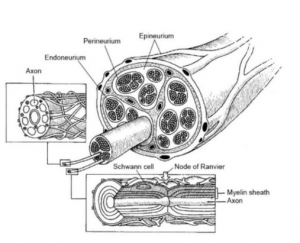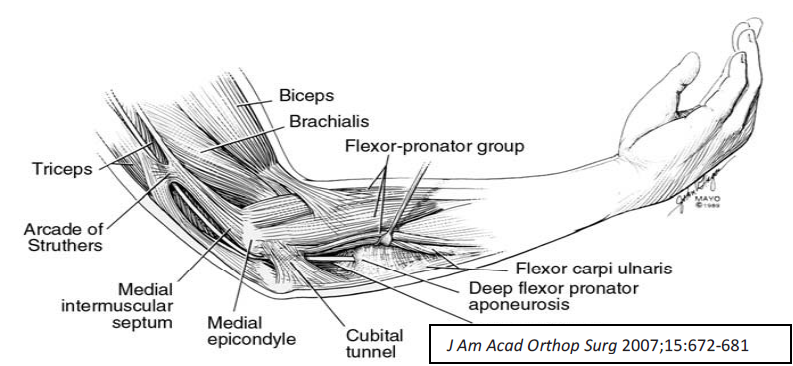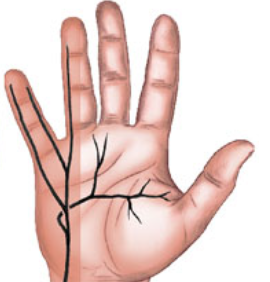Ulnar Nerve Compression at the Elbow: Cubital Tunnel Syndrome
What is Cubital Tunnel Syndrome?
Cubital Tunnel Syndrome is a compressive neuropathy of the ulnar nerve as it travels through the cubital tunnel, behind the inside of the elbow. A compressive neuropathy is a progressive injury to a nerve caused by constant, unrelenting pressure. The outer covering of the nerve (myelin sheath) which enhances the nerve’s ability to conduct signals becomes injured due to lack of blood flow. Small nerve fibers, those that conduct light touch and temperature, are affected first. Larger fibers, like those that conduct impulses to muscles, are affected later with ongoing progression.
A compressive neuropathy is progressive: it will result in increased damage until the nerve no longer functions.
Where is the cubital tunnel?
The cubital tunnel is behind the medial epicondyle (inside of the elbow). It is a tight area that can tether the ulnar nerve. This is exacerbated by elbow flexion: like bringing a hose around the side of
a building. Flexing the elbow will cause the nerve to be constricted.
Who gets cubital tunnel syndrome?
Cubital tunnel syndrome is often related to elbow position. Sleeping with the elbow bent is the most likely culprit. Prolonged elbow flexion while typing or driving can worsen symptoms. Like carpal tunnel syndrome, cubital tunnel syndrome is most likely related to aging. Tissues become less compliant and less tolerated to compression. People with diabetes, thyroid disorders, and obesity are also prone to compressive neuropathies. 10% of the population have a subluxing ulnar nerve. This can be exacerbated by rapid elbow movements (lifting weights, baseball, tennis) causing symptoms as well.
What are the symptoms of cubital tunnel syndrome?
Numbness and tingling in the ulnar nerve innervated digits (pinky and half of the ring) are the most common presenting symptom. This may be especially present at night time, often waking the sufferer up. Some complain of weakness, loss of dexterity, and a problem with dropping objects. Fine motor activities of the hand are affected because the ulnar nerve controls all the small muscles of the hand. This can make typing, and writing difficult.
How is Cubital Tunnel Syndrome diagnosed?
History is the most important way to diagnose cubital tunnel syndrome. Most symptoms are classic. A physical examination will help aid in the diagnosis as well as assessing other issues. Most of the time electrodiagnostic studies are ordered. These studies are performed by a physician with specialized training and can help rule out other problems like peripheral nerve disorders, ALS, and other concomitant compressive neuropathies. The ulnar nerve can be compressed at the wrist as well.
How is Cubital Tunnel graded?
Cubital Tunnels Syndrome is graded mild, moderate, and severe. This correlates with the electrodiagnostic criteria as well as rough clinical guidelines. Mild ulnar neuropathy has no weakness. Moderate has weakness associated with it. Severe has atrophy and significant weakness.
How is Ulnar Neuropathy at the Elbow treated?
Mild cubital tunnel syndrome is treated with nighttime splinting and reassessment at a later date to ensure no progression. The most reliable splint is a cheap elbow pad or child’s knee pad worn backward so the pad in anterior to the elbow. This worn to sleep only can often relieve symptoms in mild compression. Workplace and activity modification are also required.
Moderate and Severe ulnar neuropathy is relegated to surgical treatment. A recent study done at Harvard showed that severe ulnar neuropathy did improve with surgical treatment, but not to normal levels. This is why surgical treatment before progression to severe disease is important.
I treat patients by releasing the nerve and placing it anterior to the elbow. This way it is unaffected by elbow position. Patients are treated in a posterior elbow splint for two weeks. From week 2-4 they are relegated to limited activities. They are allowed to progress to activities as tolerated by 4 weeks.



